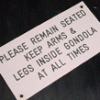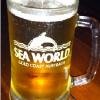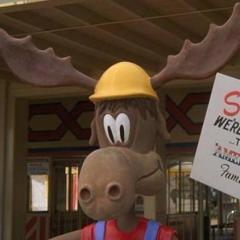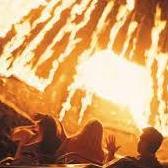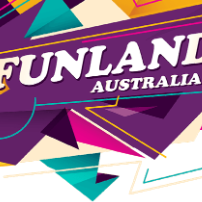Leaderboard
Popular Content
Showing content with the highest reputation on 28/08/22 in all areas
-
2 points
-
If we’re going for a B&M, why not a dive coaster? Something like Baron 1898 is probably about the right scale and price, and would complement Steel Taipan in the lineup. Personally I’d love Vekoma Bermuda Blitz. Lech Coaster is very, very good for its size and offers a lot of bang for buck.2 points
-
Because the last thing the park needs right now is another big tall coaster. It needs to round out its roster first.2 points
-
Long read but probably the most thorough article I’ve read about DW, with comments from Weiss and Yong, some tidbits on future plans, the koala furore, and recovery. Great read imo…. —————————————— Eyes tilt skyward as the Steel Taipan, a writhing, twisting speedster of a rollercoaster, rumbles to life. It’s a state-of-the-art, $32m machine that, in the words of Dreamworld’s publicity blurb, takes “three gut-lurching launches” before gaining enough speed to crest the first rise and set off on its high-velocity thrill ride. The rollercoaster metaphor is common in the world of business but for two men watching on as the Taipan strikes out, it’s particularly apt. Dr Gary Weiss, the chairman of Dreamworld’s parent company, Ardent Leisure, and the theme park’s chief executive, Greg Yong, have had their share of gut-lurching false starts ever since joining the business in the aftermath of the Thunder River Rapids Ride tragedy that took four lives in October 2016. Some pundits doubted Dreamworld would reopen after the disastrous malfunction that caused a raft to spear upwards and dump passengers into the machinery and water, killing Kate Goodchild, 32, her brother Luke Dorsett, 35, his partner Roozi Araghi, 38, and Cindy Low, 42. But it did reopen, in December that year. And Weiss was watching. Over ensuing months, Ariadne, the investment vehicle of Sydney-based Weiss and well-known Queensland property developer Kevin Seymour began accumulating discounted shares in an ailing Ardent. Come September 2017, after a very public wrangle for control, Weiss became Ardent chairman. Weiss is renowned for having a knack for turning around distressed companies and sits on a range of boards, including the Australian Rugby League Commission. As Yong, who started with Dreamworld in May 2019, puts it, Weiss has been on more boards than surfer Mick Fanning. But each time the theme park started to move forward, the horror of that day in October 2016 returned publicly via shocking evidence at the coronial inquiry or court matters. Then came Covid-19. The six-month shutdown that ensued from late March 2020, was, says Weiss, “an existential threat”. Weiss reveals that serious consideration was given to closing the park or selling it off “at a knockdown price”. “They were very dark days for us,” he says. But with a $67m lifeline from the Queensland government, and the federal government’s JobKeeper program, Dreamworld made it through, launching the Taipan late last year and readying to announce a range of family-oriented attractions in the next few months. Much of that will be funded by the recent $1.1bn sale of Ardent’s US business, the food and games chain Main Event. It’s a pared back Ardent now, with the company owning Dreamworld, the adjoining WhiteWater World, and SkyPoint at Surfers Paradise’s Q1. After distributing the bulk of its $640m portion of the Main Event sale to shareholders and paying off debt, including the Queensland government loan, Ardent now has $150m in the bank. “For the first time in a considerable period of time,” says Weiss, “Dreamworld is in a terrific position to be able to invest appropriately to facilitate the continued rebirth of Dreamworld.” Safety, says Weiss, is the No.1 priority. Not far from where the Steel Taipan is hurtling along at 105km, people lost their lives on a family friendly ride that was marketed as fun. Weiss and Yong are determined to do all they can to ensure such a tragic event never happens again. COMING BACK That familiar jingle of the 1980s encouraging us to “Take a trip away from the everyday” is filling the crisp, clear skies and conjuring memories of those heady days when Dreamworld became Australia’s first theme park. Jenny Johnston wasn’t working here when it opened on December 15, 1981, but close – she’s now in her 35th year as a cleaner and remembers those early years with awe. “It was like paradise,” says Johnston, 69, of the John Longhurst-built, Disney-inspired park. “It was so exciting. Back in those days, it was so busy, there were people everywhere.” We’re kicking back in Kickback Cove, a pastel-coloured beach world that’s become a magnet for Instagrammers and their cute child models after it replaced the Wipeout in 2019. Kenny and Belinda, the park’s koala mascots, are bouncing about, posing for photos with the growing stream of visitors – and Johnston. “Every day is different here and I love it, I love everything about it; all of us here are like family,” she says. She’s glad to see that after the Christmas/New Year Covid surge and a wet start to the year, numbers are coming back, despite Covid’s winter assault. Ardent reports ticket sales from January to July this year are the highest since the accident, with July 2022 earnings the best in five years. “We’re seeing a really good change in this second half of the year,” Yong says. Like many of the staff, Johnston feared for her job in recent years. Workers were deeply shocked by the deaths of the four visitors but the tragedy also raised the spectre of job losses. Covid did the same, and brought some redundancies, and Johnston says the thought of not walking through the gates filled her with dread. “I have a great passion for this place; it’s my getaway from my busy life outside,” says Johnston, who cares for a son with a brain injury and his two children. “It would have destroyed lots of lives if we closed, not just my life. We’ve got a lot of support from the locals and people who come here all the time. Without them, we’d be nothing.” The park is ramping up its drawcards with a range of events, including the recently launched Moonlight Night Markets on Friday and Saturday nights, with food vans and live music. Vans are already setting up as we stroll about and Weiss is keen to point out that the park is looking fresh and well-maintained: “Thanks to people like Jenny.” But Weiss knows that while fresh and clean is important, families want to be assured that a ride on The Claw, that dizzying, high-flying gyro swing lurching above us, or any of the other attractions, is safe. That’s why in August 2018, Weiss took on the role as chair of Ardent’s safety committee. “It was my view that we needed to make a very public stance as to the standards that we had already started to implement but were going to really press on with in terms of taking the issue of safety at Dreamworld completely out of the equation,” he says. “That the public would have every assurance that Dreamworld took safety exceptionally seriously.” Commercial aviation, he decided, was the gold standard for safety in Australia. He approached the former head of Qantas, Geoff Dixon, and the then chief executive of Virgin Australia, John Borghetti, to form a plan. It led to the appointment of Geoff Sartori, the former group general manager of safety and principal safety adviser at Qantas Airways, as an independent external safety adviser to the Ardent board. “I gave him free rein,” says Weiss. “I said, ‘I want you to look into every aspect of our business, I want the same safety protocols as Qantas has, you do what needs to be done and report back’.” The head of safety at the park is James Redgrove, also formerly of Qantas and Virgin. Weiss insists that all new rides come from top tier suppliers, which in the thrill ride arena is a small pool of about five, mostly European, companies. “The Steel Taipan came from Germany from Mack, one of the pre-eminent ride manufacturers in the world; they do rides for Disney and Universal. Clearly more expensive than going to a second-tier supplier but we will not compromise; we’re always striving to have the best quality and the highest standards.” A number of older rides, such as the popular Tower of Terror and Wipeout, were retired, because parts were difficult to obtain or the automation of controls unsatisfactory. Weiss says the evidence at the coronial inquiry of a range of failures relating to the Thunder River Rapids Ride came as a shock and the coroner’s report into the tragedy was “daunting”. It found record-keeping was shoddy and training poor, with the junior operator on the rapids ride receiving just 90 minutes instruction on the morning of the accident. An emergency stop button nearby was not hit because she was told no one used it. And while external engineers and regulators were engaged, the rapids ride – a park-built attraction that launched in 1986 – had not been examined in a holistic way. “There is no evidence,” the coroner found, “that Dreamworld ever conducted a proper engineering risk assessment of the ride in its 30 years of commission.” That’s all changed, says Yong, a theme park veteran who came to Dreamworld after almost 20 years with Village Roadshow. Some of the change is due to tough regulations brought in by the Queensland government after the accident; some of it introduced by Dreamworld. The fleet of attractions has been categorised by operational complexity, with skills graded before an operator advances. Training on new rides, which includes classroom learning, takes days, not hours, and the number of trainers has been reduced to ensure consistency. Staff know where emergency stop buttons are – and what they do. Before any rides go live each day, an engineer goes through a safety checklist, then the operator does a similar process. Some rides can take 2.5 hours to check. The checklist is electronically linked to a master system and, says Yong, “until our devices are signed off by our team, they’re not able to operate. That’s new”. Every device has a comprehensive safety assessment, says Yong. “When I say comprehensive it’s not one page, or 20 lines, I’m talking hundreds of individual, identified things that we look at with these rides,” says Yong. “Every year the ride goes down for its annual maintenance, the safety assessment is revised.” And $12m has been set aside for the next three years to enhance safety beyond requirements. “We spend more money today on engineering safety than we’ve ever spent,” says Yong. He rattles off examples of safety changes, from the reprofiling of a sharpish dip in a pool, to a staircase put in to the $20m Sky Voyager, the Southern Hemisphere’s first “flying theatre”, so that cleaners don’t have to use ladders. It was expensive work, says Yong, none of which will sell a single ticket but will improve safety. But can we be sure that, over time, safety continues to have such devoted focus? Yong starts to answer, then falters. “I’ve got a picture …” he says, tears welling in his eyes. He excuses himself and leaves the room. On return, he says: “I’ve got a picture in my office of the people that were involved here (in the tragedy) and I’m never going to be responsible for something like that happening,” he says. “It drives me like you wouldn’t believe.” MAKING IT WORK When John Osborne met with Weiss to discuss taking on the role of chief executive of Dreamworld as part of the rebuild in 2018, he was well aware of Weiss’s 1980s-forged reputation as a corporate raider. Osborne had no interest in joining if Weiss wanted to do a quick fix-and-flick of Dreamworld for profit. But he didn’t, says Osborne, “so that was a very short conversation”. “All the corporate raider stuff, history can deal with that, but my dealings with him at Dreamworld were that this was a person who was passionate about helping to save this business for the community’s sake and for the people that were there. He worked around the clock doing that.” Overhauling the safety systems and building a new management team – with Yong coming on as the chief operations officer and Osborne’s heir apparent – was key when Osborne took on the role. But another big task was to soothe a workforce traumatised by the tragedy. “They were just broken,” he says. “These are people who had put their life into showing up every day and making sure everybody had a great time and for them, it was absolutely devastating … it had a major psychological effect on them as individuals and the whole organisation. So that’s what we walked into.” Osborne, who’s had his share of successes in recharging underperforming businesses, made his name by turning the Mingara Recreation Club on NSW’s Central Coast into one of the top community clubs in the country. He put his people skills to work at Dreamworld, spending hours on the frontline with staff, and creating community events at the theme park to bring back smiles. The work started to bear fruit. Christmas 2019 was strong and the February 2020 half-yearly results were encouraging. “That was the best Christmas period we had since the tragedy occurred so we thought, ‘This is actually starting to come together’,” says Osborne. A month later, he’d be standing in front of 800 workers, telling them they’d be stood down due to Covid. Money had to go out for maintenance and to feed and care for the park’s wildlife, but nothing was coming in to a business already operating under negative cash flow since the tragedy. Covid was also knocking around Main Event in the US. And no one knew how long shutdowns would last. “This is where Gary’s leadership stood out,” says Osborne. “A lesser person would have said, ‘Let’s get out of this’.” Weiss recalls receiving plenty of unsolicited advice “from the outside” to sell Dreamworld as Covid took hold. “Lots of people are prone to provide opinions without the responsibility for them,” he says. That’s not to say the option of selling wasn’t explored. “We had to examine all alternatives as Ardent’s share price crashed,” Weiss says. In those “very, very challenging” months, models of various scenarios were run. “One of which mapped out how much we would need over what sort of period we guesstimated it would take for people to return,” says Weiss. “And we ran a model of, ‘Okay, so what happens if we don’t reopen’.” Ever? “Yep,” he says. Yong says that on balance, the models pointed towards selling. But Weiss set about trying to secure the funds to keep going. “We felt a significant responsibility to our team and to the community that we needed to do what we could do to get through this,” Weiss says. “Dreamworld is important, if not critical, for the southeast Queensland tourism economy; it’s critical for employment – direct employment and multiplier effect – on the Gold Coast.” First step was the sale of a 25 per cent share of Main Event to US private investment company RedBird in June 2020. (Ardent had already sold its AMF Bowling division in late 2017.) Then Weiss went calling to the Queensland government. Armed with the terms of the deal that enabled RedBird to increase its share in Main Event to 51 per cent from this July, Weiss and the board convinced the government in August 2020 that Ardent would be able to repay the $67m, three-year loan. In the end, Main Event was sold this year to its entertainment rival, Dave & Buster’s, and the Queensland government loan has been repaid early, with interest. And if that loan hadn’t been secured? “I don’t know how we would have raised the funding,” says Weiss, “or if we would have had to sell Dreamworld to someone at a knockdown price. “With full gratitude to the Queensland government, we were able to continue and … we find Ardent now debt-free, owning its real estate here, with $150m in the bank and, hopefully, some clear air.” Of course, Covid remains and there are still issues arising from the Thunder River Rapids Ride tragedy which saw Ardent pay a $3.6m fine after pleading guilty to three breaches of workplace health and safety laws. It says the bulk of compensation claims have been paid through its insurers, including WorkCover Queensland, but some are ongoing. Ardent won’t comment on whether previously outstanding claims, such as that of Ebony Turner, Kate Goodchild’s then 12-year-old daughter who was on the raft when the accident occurred, have been settled. Although not an Ardent action, the courts are still dealing with legal proceedings taken by WorkCover against engineer Tom Polley and his company Danski to recover some of the money it paid out. Polley certified the ride as safe the day before the accident but he has filed a defence to WorkCover’s action, claiming his checks covered structural and mechanical issues while the tragedy was caused by an electrical fault in water pumps. And Ardent still faces a class action from disgruntled shareholders for financial losses following the tragedy of October 25, 2016. The trauma of that day is part of Dreamworld’s history. Four lives were lost, their memory marked by a native garden in a pocket of the park down by Oaky Creek. Under the shade of gums and grevilleas, four park benches bear their names: Kate, Luke, Roozi and Cindy. MOVING ON As Yong waits outside Central Park Station to take a ride on the Dreamworld Express, Lynne Slater, 68, and her husband are trying to decide what to see next. They live at nearby Hope Island and are Dreamworld annual passholders, visiting every couple of days, often with grandchildren in tow. The kids love the wildlife area, Slater tells Young, but, she says, the rides for young children are looking a bit tired. “We’ll have some news on that soon,” says Yong. “We just signed a new deal with The Wiggles and you can imagine we’re going to do a lot with that.” Yong is close-lipped about the rides to be announced before Christmas, apart from saying they’ll be family focused, themed and “highly immersive”. “I visualise Grandma or Grandpa riding with a young grandchild and having a very good experience, as opposed to big, scary thrill rides. That’s part of what we do, but the next few things are very much about family and intergenerational experience.” Dreamworld Future Lab will not be among the next few things, though. It was revealed last month that after Dreamworld received a $2.7m grant from the Queensland government in 2019 for the koala and wildlife research facility, the concept had been shelved due to Covid and the money “repurposed” for the Steel Taipan. Yong says Dreamworld told the government that Covid’s arrival had made the lab untenable, not just because the shutdown meant Dreamworld had no cash flow to fund its creation but because academic institutes were also rocked by Covid and unable to provide researchers. He says Dreamworld then reapplied to a different grant program for the Steel Taipan. “It wasn’t, as it may have seemed, that Dreamworld was given a grant and took that money and bought a rollercoaster.” Still, he says, the lab is “not the most important thing on our radar at the moment in terms of trying to recover the organisation to not be losing money and to be breaking even and profitable again”. The Slaters head off and we climb aboard the Dreamworld Express, recently back doing its park circuit after a $1m refurbishment. It’s the only original ride from the day John Longhurst threw open the doors to the theme park, carved out of a slab of land he bought in 1974. Longhurst’s drive to see Dreamworld materialise is legendary, with tales of his long days on a bulldozer, excavating the park’s 800m channel known as the Murrisipi River. There’s still a chunk of that land – about 25ha – on Ardent’s books. With property developer Kevin Seymour in its camp, money freed up to do preliminary work and Dreamworld sitting in the fastest growing region in Queensland, Ardent now plans to maximise the land’s potential. It’s in talks with a number of established operators to run a tourist park next door to Dreamworld, with cabins, glamping and some powered sites. Yong says some of the property is land-locked but the development of the $1.5bn transport corridor, the Coomera Connector, and other linkages associated with the 2032 Olympics and the planned Coomera Health Precinct will offer more options. Leisure and hospitality offerings, and perhaps some retail, are on the cards. As we tootle off sedately, the Steel Taipan’s carriages rush past nearby and Yong surveys the theme park he’s committed to seeing regain its place as a premier tourist attraction. A viewing platform is planned, he says, so that people can watch their mates hurtling along the rollercoaster after reaching a G-force of 3.8. Forces within and outside its control have hit Dreamworld hard in recent years, but Yong says the business has been stabilised, it’s got the funds to invest in attractions and visitors are coming back. “I think people see the change here and they can feel that change,” he says, as the train pulls up at Corroboree Station. To one side, is the memorial park in honour of the four people who lost their lives. To the other, the river Longhurst created all those years ago, long before most of us knew the term coronavirus. Then the Dreamworld train starts up, and moves on. https://www.dailytelegraph.com.au/news/they-were-very-dark-days-inside-story-dreamworld-boss-reveals-how-close-theme-park-came-to-closure/news-story/64593ab8fd18fefee06bf2a0c88f78781 point
-
Thanks for noticing! As always, we welcome any feedback on here or in private. 😀 We aren’t here to replace anything or take over the world, just excited to have a few likeminded mates around for a laugh every month or so.1 point
-
1 point
-
Not sure how it was on the day of the "accident", but it definitely had a warning sign prior to it. The Train on 2nd July: The Train today:1 point
-
1 point
-
1 point
-
Hopefully a quality "flume ride" aged appeal is wide and certainly SEAWorld, needs more water themed attractions.....anything, BUT a[nother] "coaster", that's a bad business and entertainment offering spiral to get trapped in!1 point
-
I honestly forgot Dives existed lmao, but they'd be above a Wing and under a Giga in fitness for the park IMO1 point
-
Going with an Invert or a Flyer will give Dreamworld a 3rd inversion based coaster, there’s no airtime filled coaster at Dreamworld. A B&M is also very different to a Mack hyper so i think it’s different enough to justify, Rivals cant always be australia’s only hyper.1 point
-
Despite knowing it to be true, the only stuff that demonstrstes it and is also shareable, would be considered hearsay. There are times I'm speculating though, and times where I am not. I'm not speculating on this occasion. Also I'll move this part of the conversation to the right thread soon so this thread can be exclusively about the article without getting bogged down.1 point
-
Hi guys I’m new here, I think adding Surfrider to SeaWorld would be fine as a filler attraction, but not without adding something else substantial a few years after, and let’s face it, SeaWorld isn’t gonna do that, considering the land they have. I feel like this park needs a proper thrill coaster, cause JR just meanders around the track, Storm is a water coaster with literally a 1.1m height requirement, and Leviathan will be a great airtime machine but is still family friendly. Either a raptor, small scale vekoma or sky rocket 2 will fill in inversion gap, and potential even a launch, all while probs stay under a 1.4m requirement.1 point
-
We are getting a Fabbri Booster Maxx next year sometime. https://www.fabbrigroup.com/thrill-rides/booster/booster-maxxx/ It was reported in ParkWorld magazine (Spring 2022 - Part 2).1 point
-
From my previous experience working at Movie World. Weekday attendance was approx 3000 a day, weekends 4000 - 5000. School holidays were around 8000-12000. The park would close the gates at 16,000 which was the full capacity. General rule of thumb was if the park is expecting more than 10,000 they would add the 3rd HSD show (11am, 12:15 and 1:30pm) and for a crazy peak day they would add a 4th show at 4:15pm. This was back around 2013, so not sure what the current park capacity is. But they have certainly shut the gates a few times in the past. I remember being stuck operating batwing till 7:15pm when the park closed at 5:30pm... most boring ride in the park to operate IMO1 point
-
On the one hand, this sounds cool AF and can't wait to see it. On the other, the LEDs are probably too bright and will be switched off once the ride opens. Cheers for camping out and capturing this. What a way to make a Parkz Entrance!1 point
-
I'm surprised they didn't squeeze in "this comes just six years after the thunder river rapids ride incident" 🤣1 point
This leaderboard is set to Brisbane/GMT+10:00
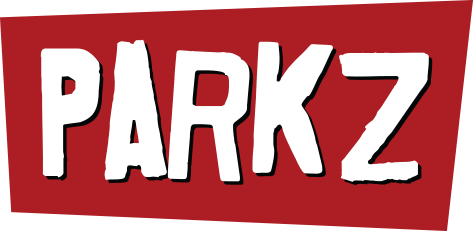

.thumb.jpg.ca964889ab15a7ebdc1cfc7e75e81239.jpg)
